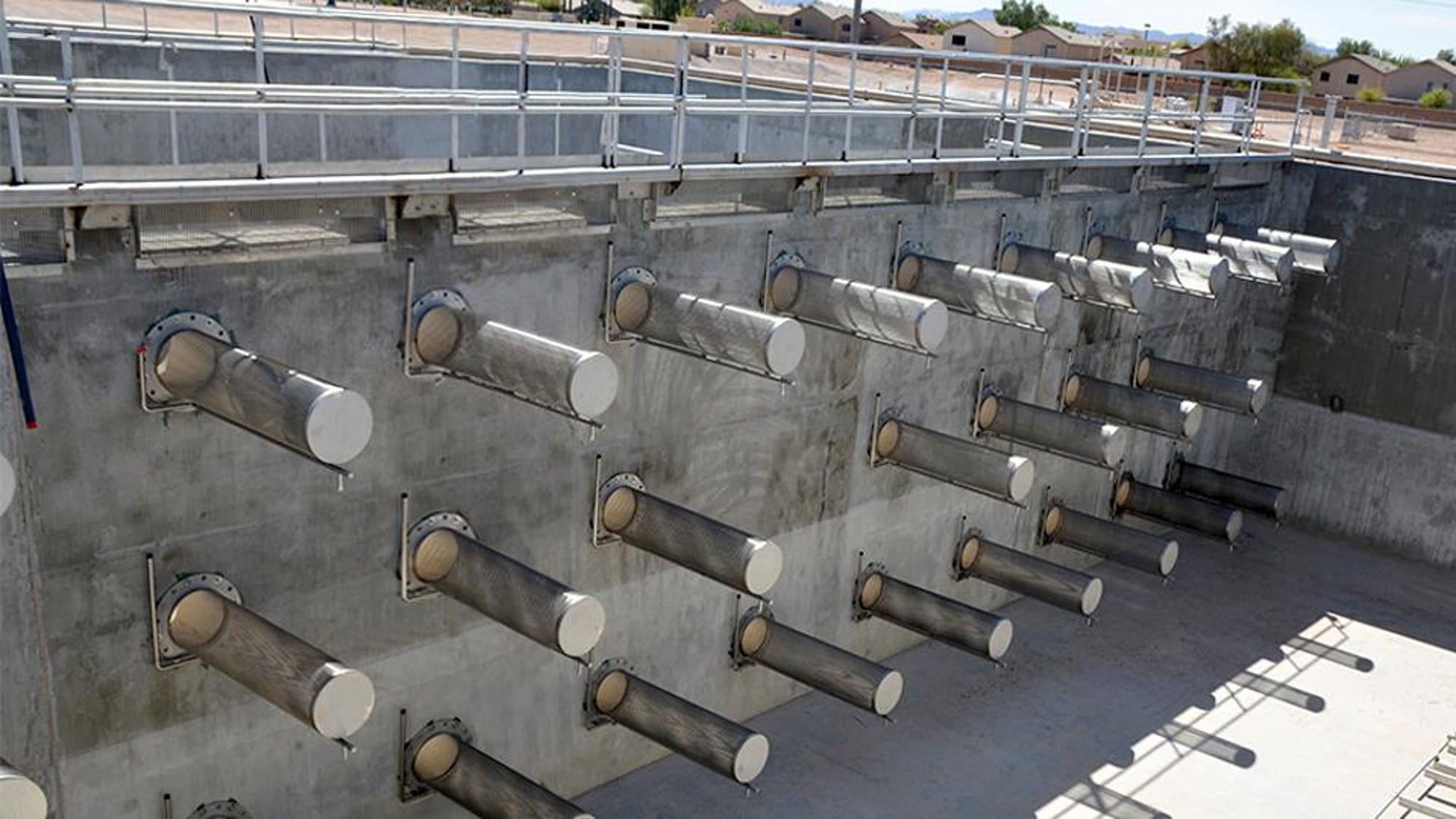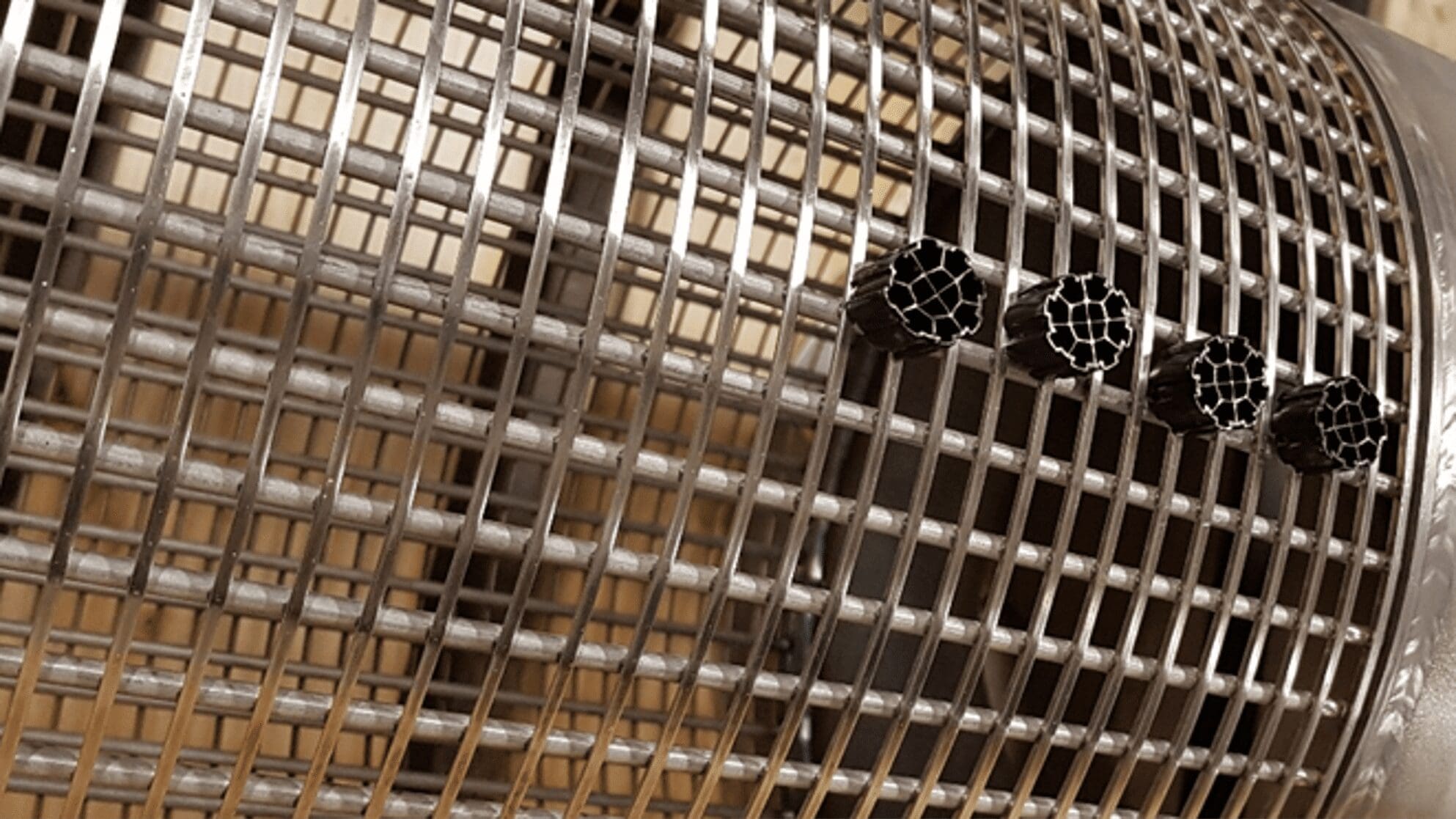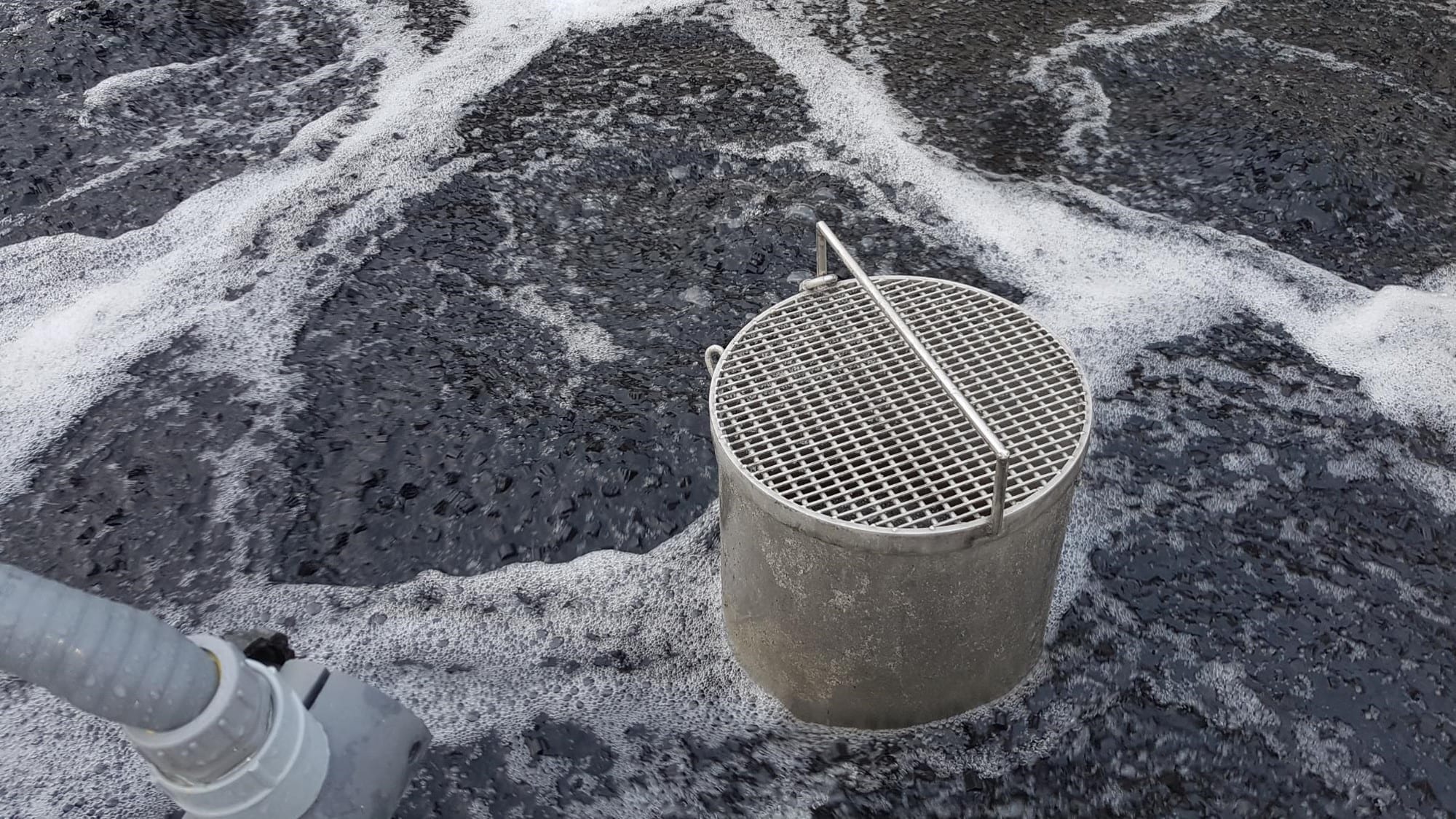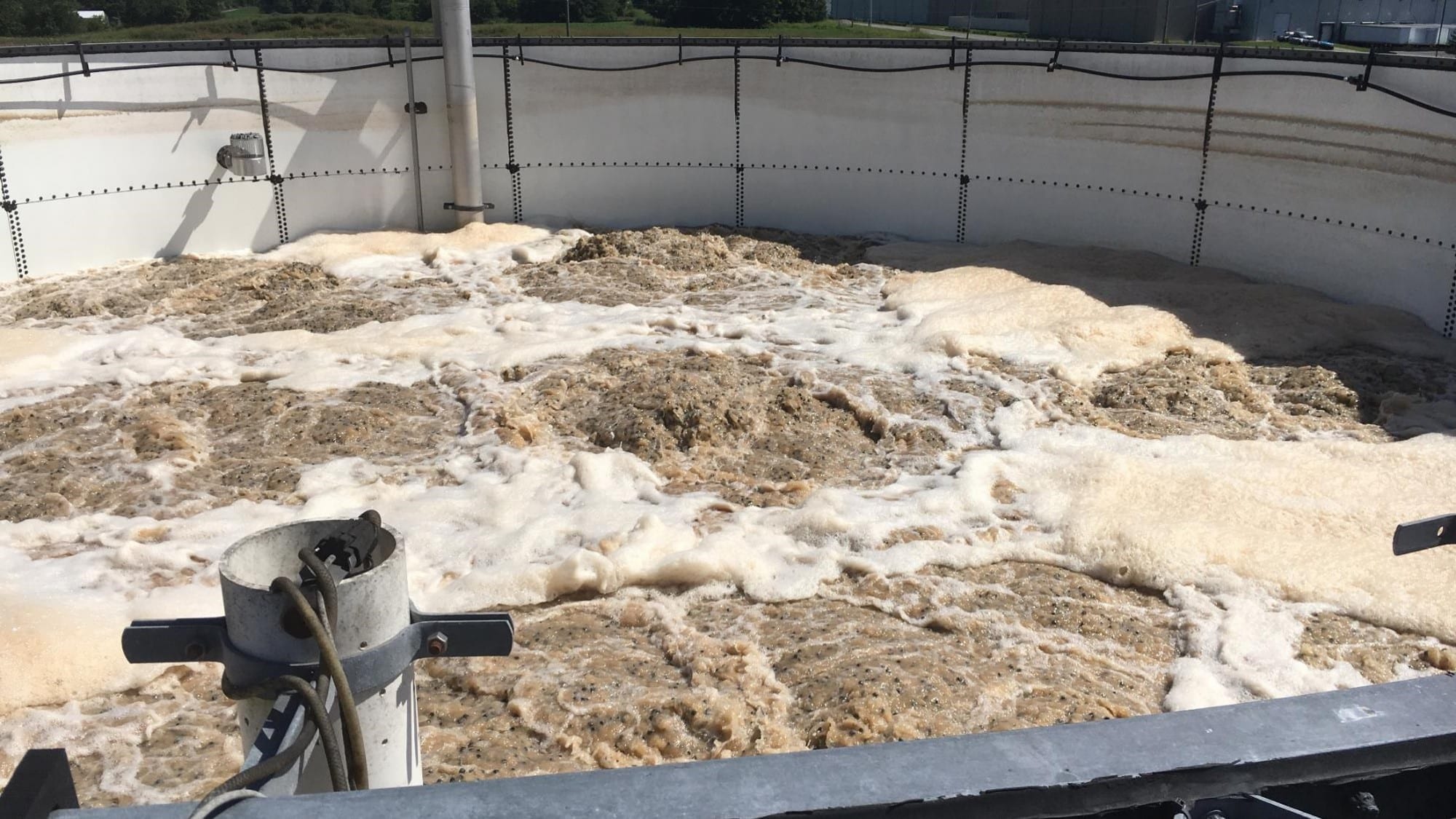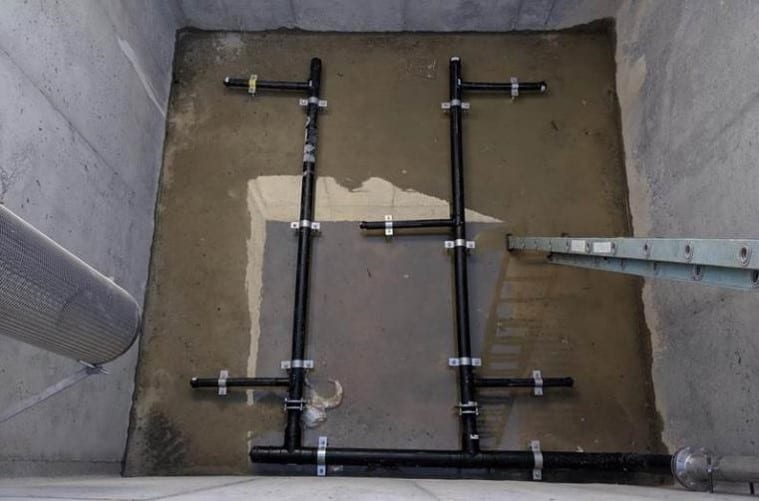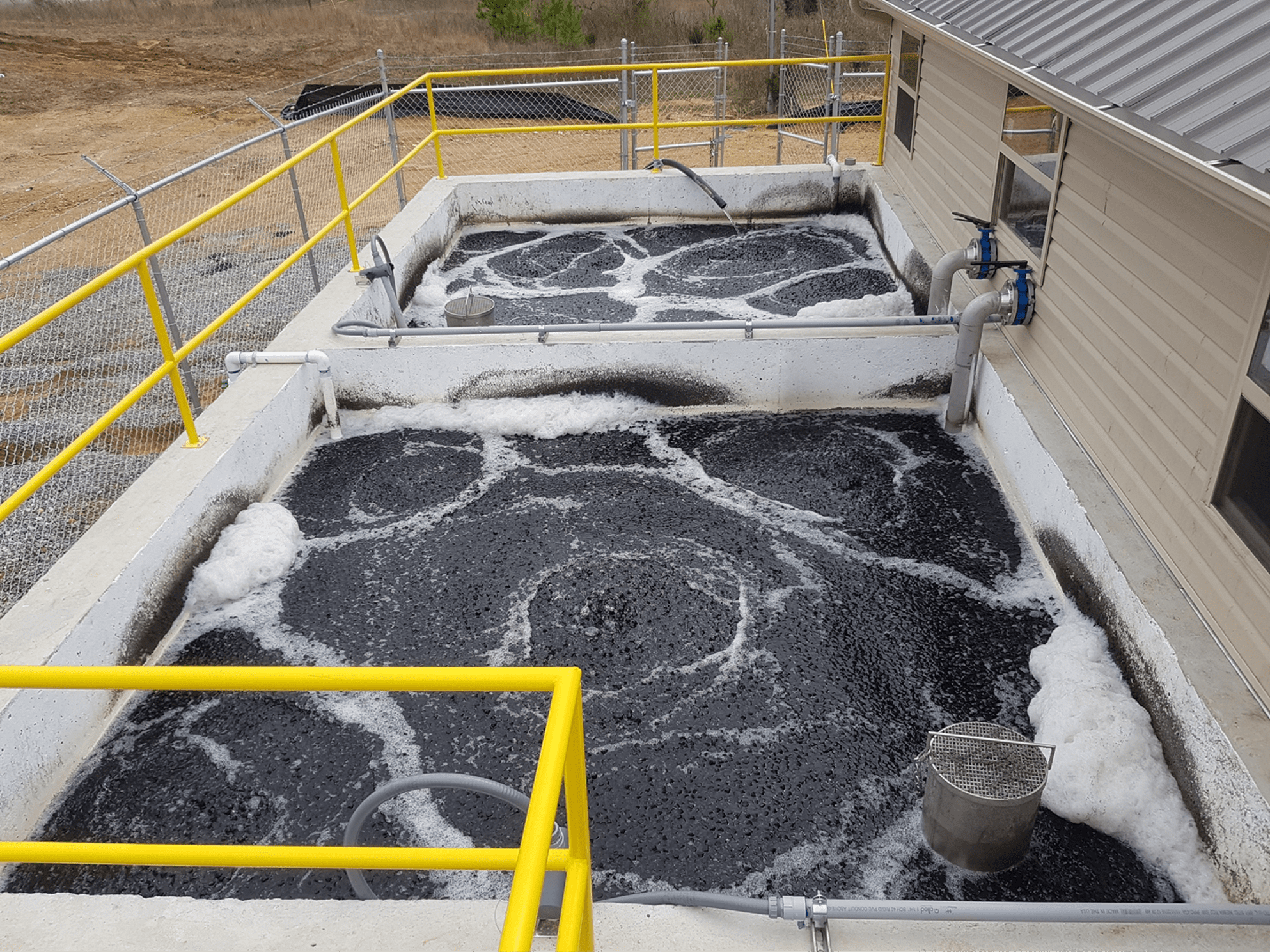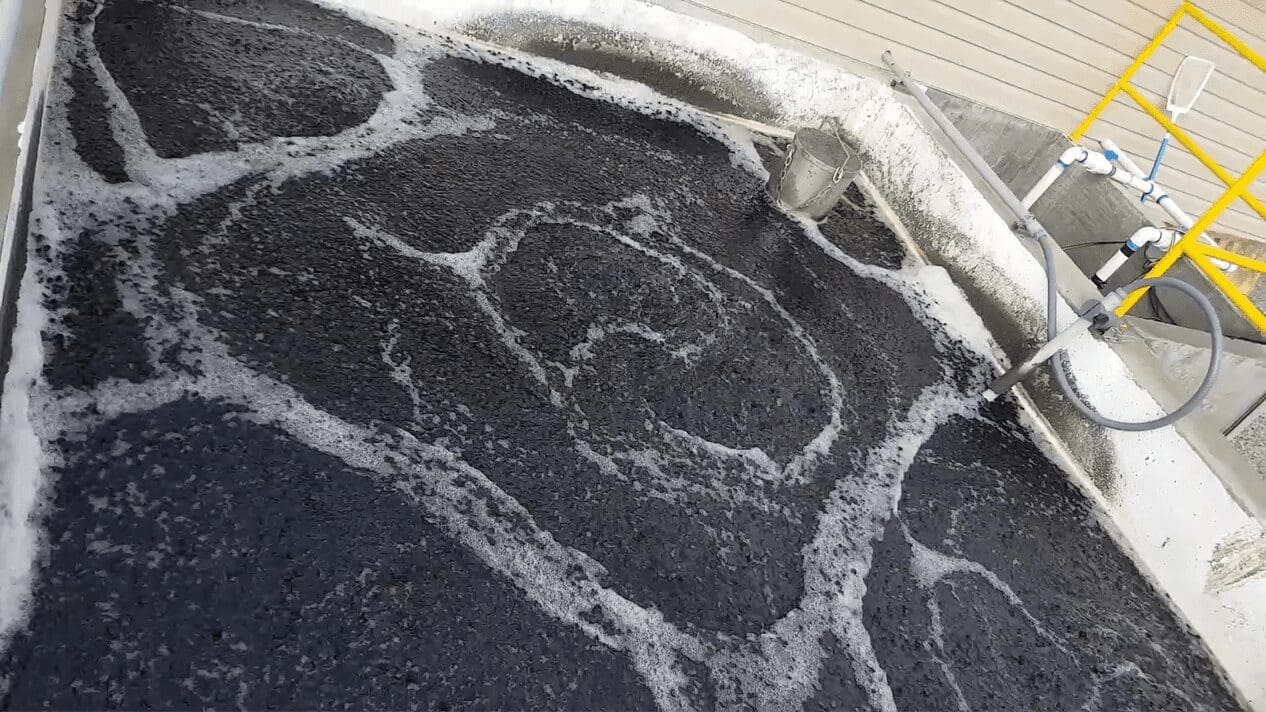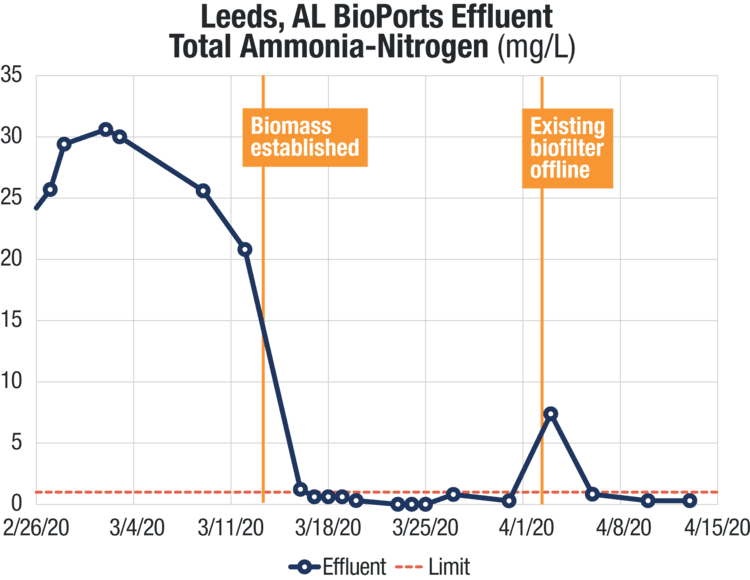Your challenge:
Intensify your BOD, ammonia, or nitrate removal
Meet ammonia, BOD, and/or nitrate limits: You need a solution that can consistently hit required Total Ammonia-Nitrogen, cBOD₅ and Total Nitrogen/Nitrate removal levels.
Increase the surface area available to attached-growth microorganisms: By growing nitrifying and heterotrophic biomass on a surface, BioPorts minimizes the washout associated with suspended-growth systems.
Intensification maximizes treatment: In situations where your loading is high strength or highly variable, you need a system that can respond most dynamically.
Our technology: BioPorts™ MBBR
Our BioPorts case studies
Wabaseemoong Independent Nations
Project Background & Challenges Wabaseemoong Independent First Nations are a group of three communities located near the Ontario–Manitoba border about 120 kilometers north of Kenora, Ontario....
Maricopa, Arizona
BioPorts™Project Background & Challenges In 2019, the Global Water - Palo Verde Water Reclamation Facility (WRF), located in northeastern Maricopa, AZ, was serving a growing population of 48,629...
Absarokee, MT
optAER® SAGR® BioPorts™Project Background & Challenges In 2016, the CDP of Absarokee in Stillwater County, MT began looking for solutions to upgrade their existing three cell aerated lagoon. As...
Palmyra, WI
BioPorts™Project Background & Challenges Since the late 1970s, the Village of Palmyra, WI Wisconsin was operating a three-stage aerated lagoon. Faced with requirements for additional capacity...
Seneca Landfill, PA
BioPorts™Project Background & Challenges Officially opened in 1965 just 25 miles north of Pittsburgh, the wastewater treatment plant at Seneca Landfill has the capacity to store millions of...
Leeds, AL: BioPorts MBBR
BioPorts™Project Background & Challenges In the heart of Alabama, where the counties of Shelby, Jefferson, and St. Clair intersect, sits the town of Leeds, birthplace of basketball legend...
At-a-glance
Key Advantages:
- Wastewater treatment intensification offers more treatment capacity in a small footprint
- Handles variable loading
- Media size optimized for huge surface area while allowing for more coarse screening
- Operational simplicity
Applications:
- Nitrification
- Pre- or post-denitrification
- BOD reduction
- Activated sludge plant upgrades (as part of BioPorts iFAS)
- New IFAS installations (Integrated Fixed-film Activated Sludge)
- Small-footprint lagoon pre-treatment or polishing
How it works
Reliable, simple, intense.
BioPorts MBBRs work based on a series of basic principles, offering them three key advantages:
BioPorts MBBRs are reliable.
When flows increase quickly, it can overwhelm an activated sludge system’s capacity and cause biological washout.
With BioPorts, your biology is fixed where you need it: in your treatment basin, fixed to the surface of BioPorts media which themselves are retained using coarse screens. No more biology washout.
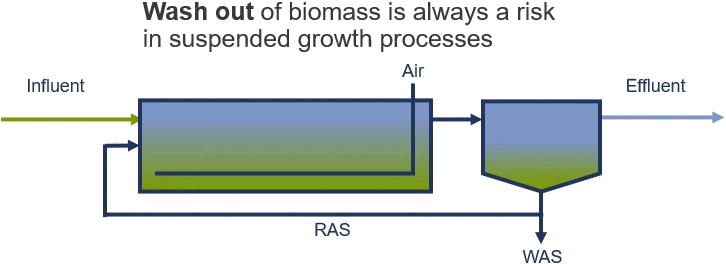
BioPorts MBBRs are simple.
Balancing return activated sludge is a challenging part of managing an activated sludge plant, and although the improvements in oxygen transfer make it well worth it, managing membrane-based or, more challenging yet, fixed-pore fine-bubble aeration adds to an operator’s workload.
With BioPorts MBBR, you don’t need to return your activated sludge because, again, your active biology is fixed directly to the media retained in the basin using coarse screens. And because moving media both impedes the rise and breaks up the aeration bubbles, lower-maintenance membrane-free diffusers can be used while achieving the same oxygen transfer.
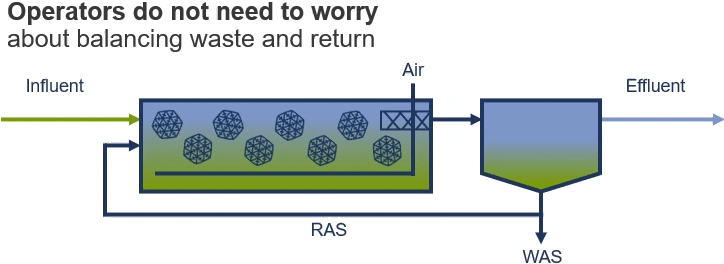
BioPorts MBBRs are intense.
When your facility was first designed, it probably wasn’t being asked to handle the high strength or variability as you’re seeing now, and that was when it was brand new!
Create and retain the density of treatment to better handle today (and tomorrows’s) loading levels and their fluctuations, all thanks to your BioPorts MBBR.
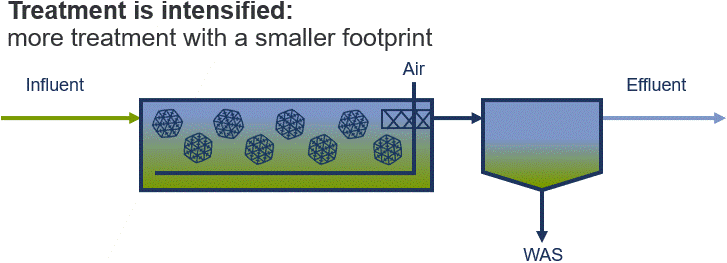
BIOPORTS Components
BioPorts Media: 600-14
Media Design
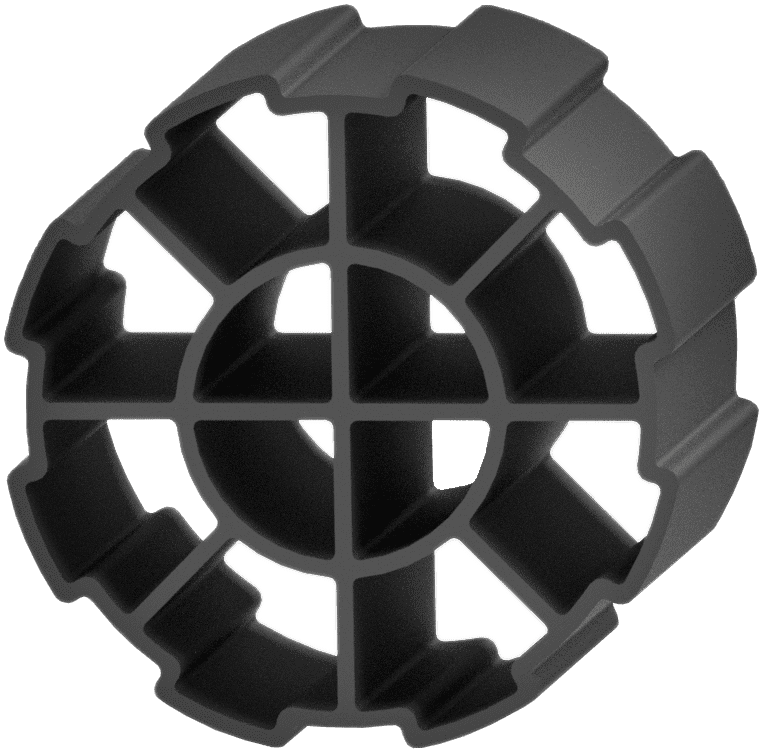
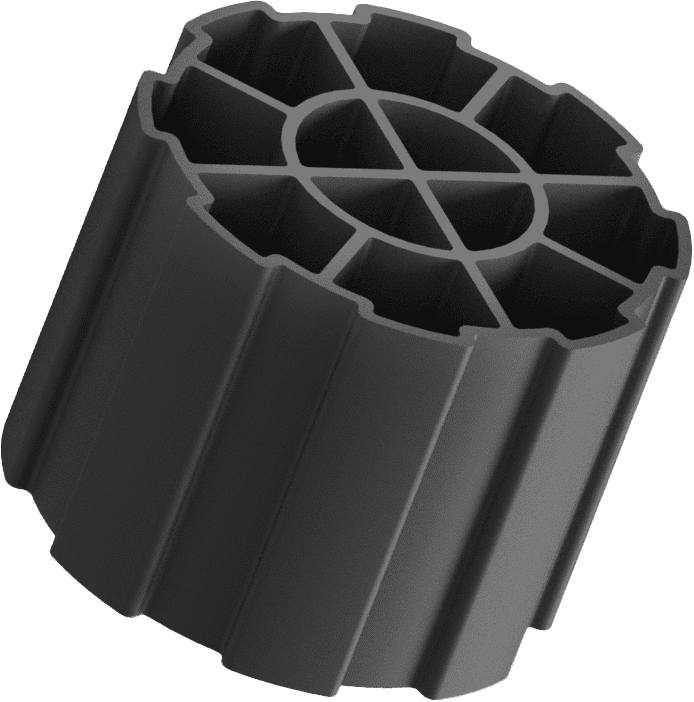
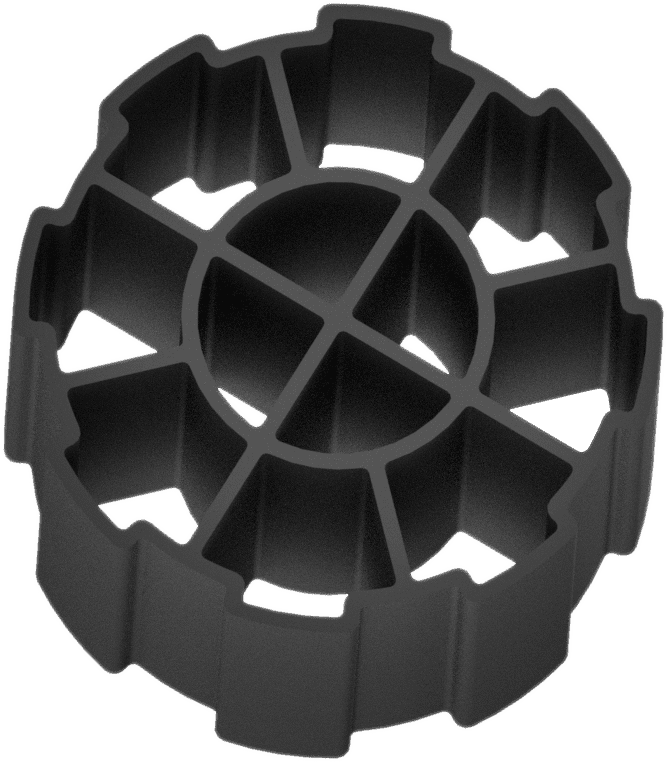
Biofilm coverage
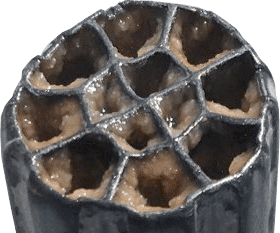
Specifications
| US | Metric | |
| Outer diameter | 0.70 in | 18 mm |
| Cylinder length | 0.55 in | 14 mm |
| Biologically-active surface area | 179 ft²/ft³ | 589 m²/m³ |
| Material | High-density polyethylene (HDPE) with carbon black added for UV protection | |
| Specific gravity | 0.96 | |
| Max aerobic fill capacity | 67% | |
| Max anoxic/anaerobic fill capacity | 50% | |
BioPorts Media: 900-09
Media Design
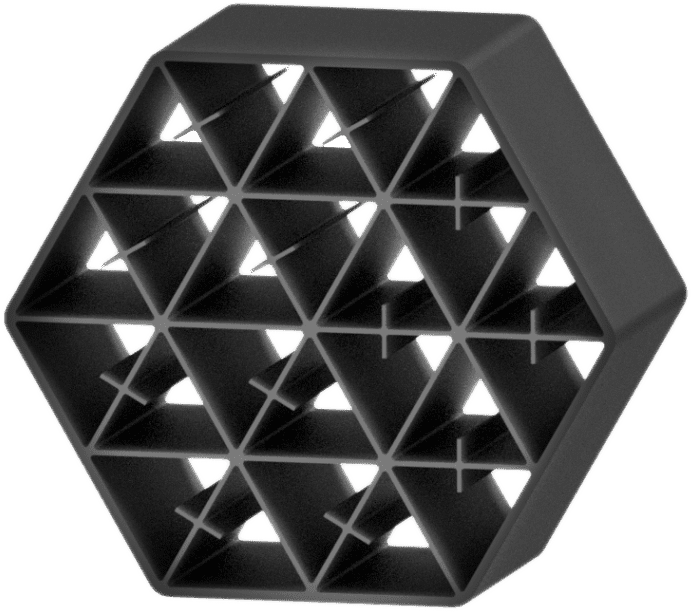
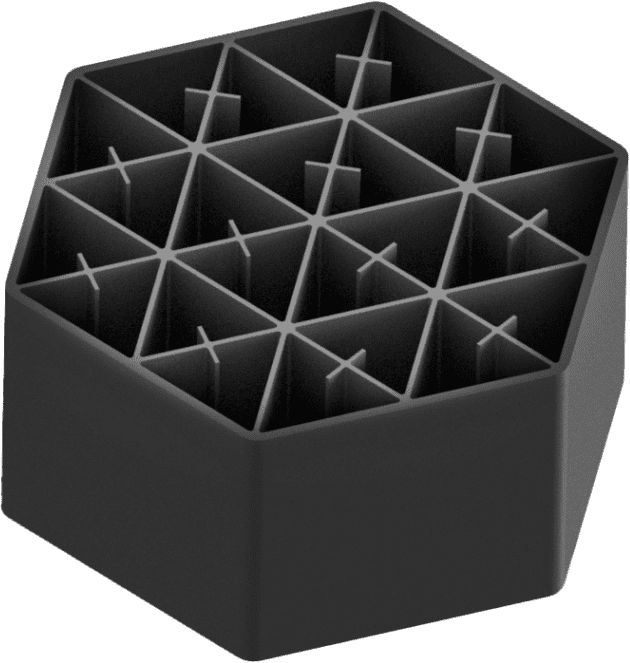
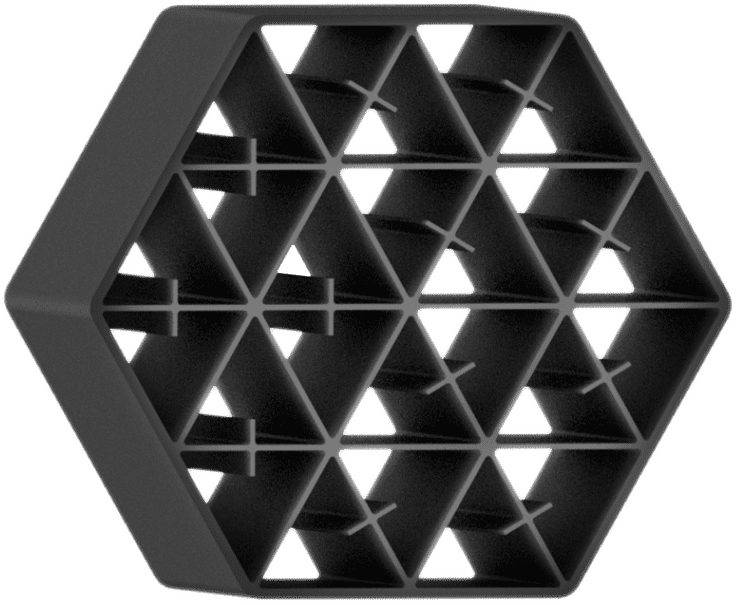
Biofilm coverage
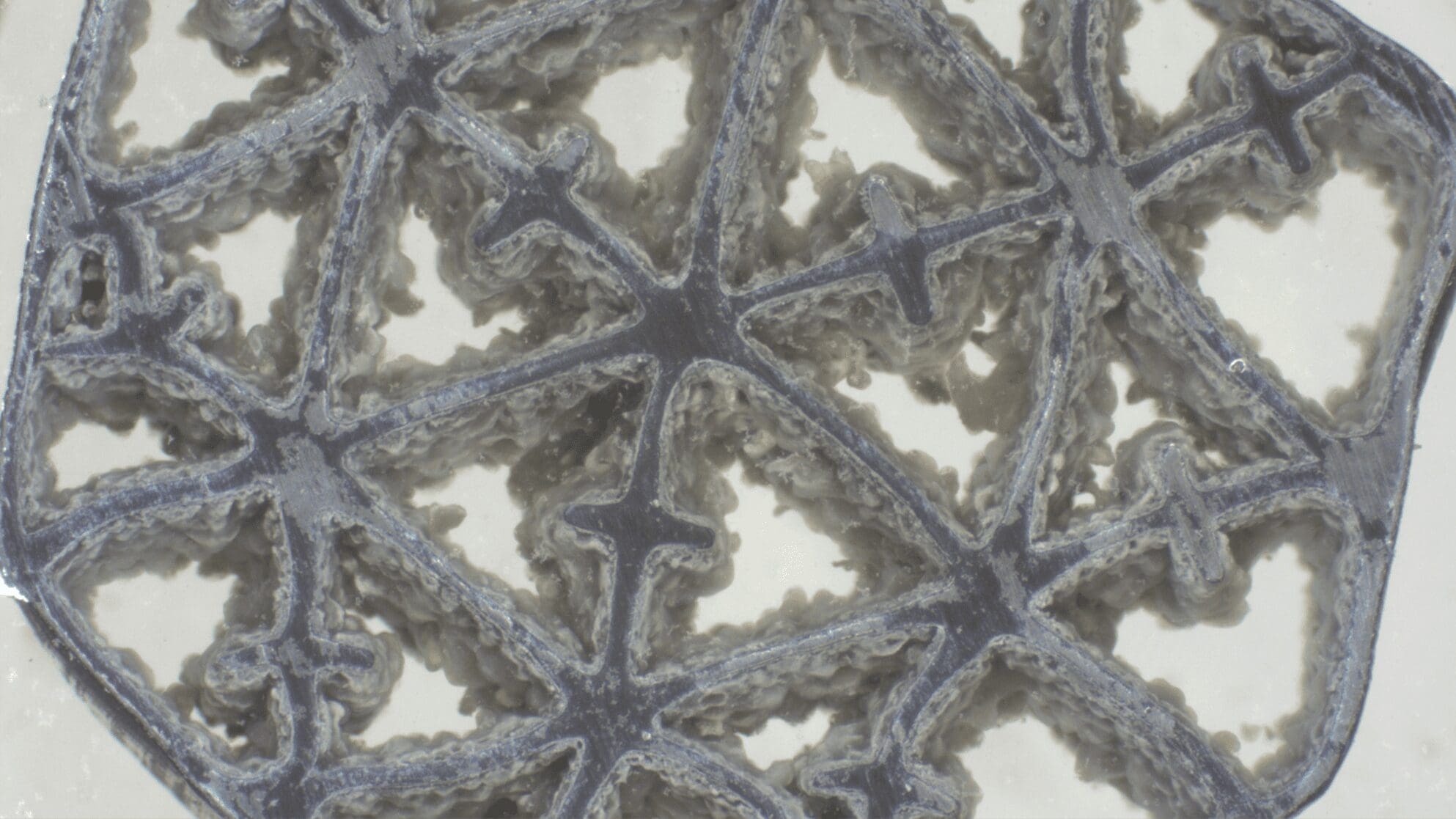
Specifications
| US | Metric | |
| Outer diameter | 0.67-0.78 in | 17-20 mm |
| Cylinder length | 0.35 in | 9 mm |
| Biologically-active surface area | 287 ft²/ft³ | 942 m²/m³ |
| Material | High-density polyethylene (HDPE) with carbon black added for UV protection | |
| Specific gravity | 0.96 | |
| Maximum aerobic fill capacity | 67% | |
| Maximum anoxic/anaerobic fill capacity | 50% | |
Media Screens
BioPorts media retention screens are fine enough to keep the biofilm-carrying media from escaping the basin, but coarse enough to allow particulates to pass through and prevent the screen from fouling or blinding.
Media screens can also be arranged in parallel to better accommodate variable flows. Vertical screens with above-surface access ports can be used to enable better access for effluent sampling or occasional screen maintenance.
Fixed Grid Aeration
Through the collaboration with EDI, a fellow Axius Water company, even our products are “Stronger Together,” and our aeration capabilities are the envy of the industry. Most BioPorts facilities are designed with EDI fixed grid aeration within our basins to optimize performance with minimal O&M.
In fact, based on that aeration expertise, Leeds, Alabama’s BioPorts MBBR is able to achieve optimized mixing and oxygen-transfer with ~25% of the energy typically required.
BOD and AMMONIA ARE NO MATCH FOR BIOPORTS
The BioPorts™ process is the best choice for roughing high influent BOD, polishing ammonia, or upgrading to IFAS. In place at dozens of installations across North America, BioPorts MBBRs or IFAS installations deliver as promised and ensure that operators sleep well at night knowing they have the system in place to beat their BOD and nutrient limits.
Want to know what BioPorts could do for your system?
Submit your RFP today and our on-staff professional engineers can help you size and design a BioPorts MBBR to meet your wastewater treatment requirements.
HOW MUCH DOES A BIOPORTS SYSTEM COST?
There are many factors which can influence the cost of a BioPorts system, including design flows, loading, treatment requirements, and existing infrastructure. The best way to determine the cost for your specific application is to submit your RFP to our project development team.
HOW EASILY CAN A BIOPORTS SYSTEM BE UPGRADED?
Based on its small footprint design and modular scalability, BioPorts is among the most simple wastewater treatment solutions to upgrade, whether your focus is further nitrification or BOD removal, denitrification to meet Total Nitrogen limits, or beyond.
HOW OFTEN DOES BIOPORTS MEDIA NEED TO BE REPLACED?
Almost never. The media is sized so that it can be retained by coarse effluent screens for no downstream media loss, and it is built from durable HDPE that means the BioPorts media that you start with should last the life of your installation.
DOES WATER NEED TO BE HEATED TO ACHIEVE NITRIFICATION IN A POST-LAGOON SETTING?
If you are looking to achieve <1 mg/L of ammonia in freezing cold water, Nexom has already solved that problem with the SAGR, which has numerous proprietary advances that help it overcome limitations related to cold lagoon effluent.
BioPorts is tremendously effective in many post-lagoon settings, so to identify which solution is best for you, reach out and let our Nexom engineers guide you.

